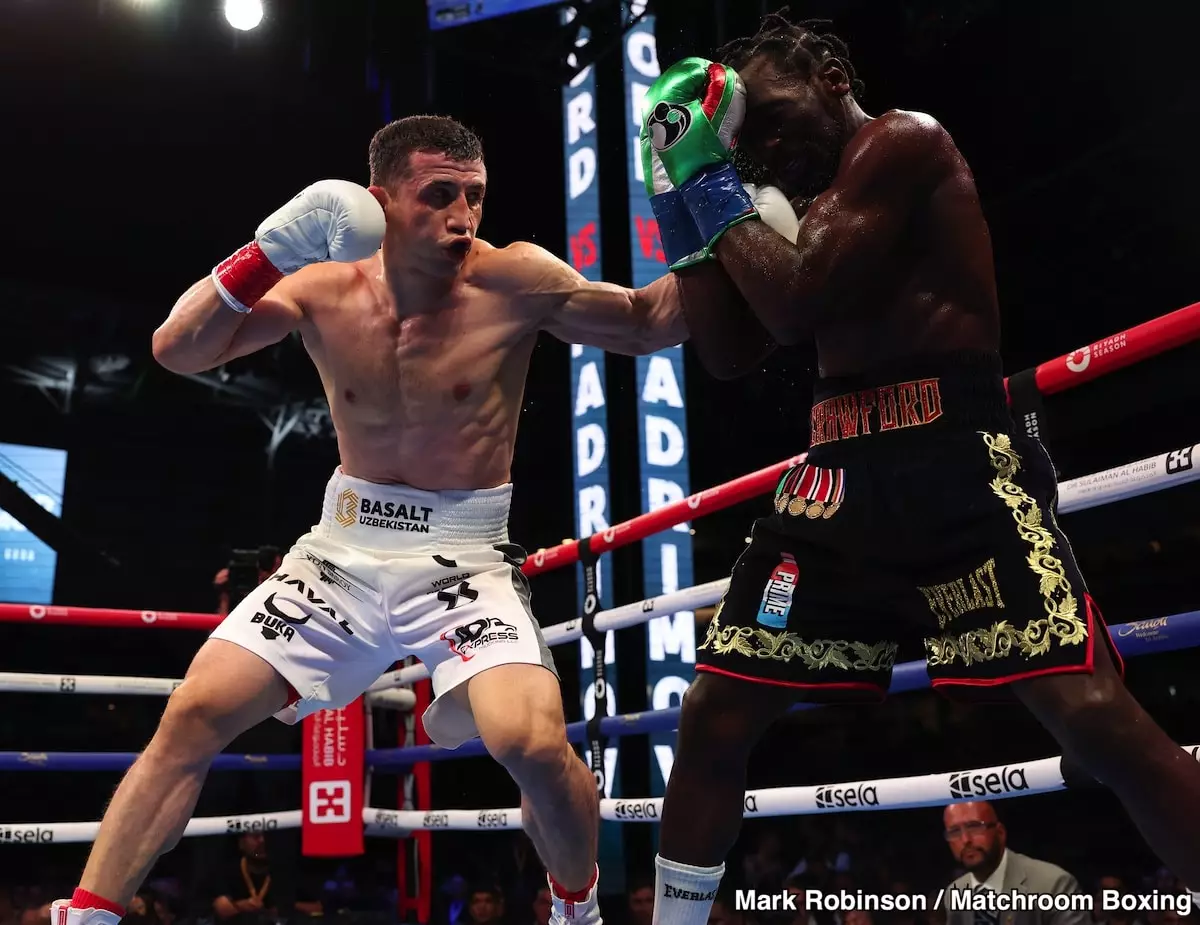In the world of boxing, performance dynamics can be influenced by a multitude of facets—physical conditioning, mental preparedness, and the level of competition, to name a few. Terence Crawford’s recent bout against junior middleweight champion Israil Madrimov raised several eyebrows and ignited debates surrounding his performance. Boxing coach Roy Jones Jr. argued that Crawford underperformed due to fighting an opponent with limited professional experience. With only ten fights under his belt, Madrimov was not perceived as a formidable threat, leading many to speculate whether Crawford’s lack of motivation played a crucial role. However, this perspective simplifies the much more layered narrative of a fighter’s mental state and physical readiness.
Crawford, with an impressive record of 41 wins and 31 knockouts, faced a fighter who, despite being relatively new to the professional scene, had amassed significant amateur accolades. Jones Jr. points out that Madrimov’s extensive background, which includes around 300 amateur fights, rendered him a noteworthy challenge for Crawford. This nuance suggests that even fighters with fewer professional fights can possess the requisite skills to challenge highly regarded opponents. Thus, it might be erroneous to solely attribute Crawford’s struggles to a lack of motivation; rather, they may stem from the complexities of facing a well-rounded, technically sound adversary who also brings an edge of fresh hunger to the ring.
Age in professional sports, particularly boxing, often raises questions regarding a fighter’s longevity and sharpness. At 37 years old, Crawford is increasingly subject to the realities of age-related decline, especially when he has fought sparingly over recent years. The notion that inactivity might degrade one’s performance is a widely accepted tenet in sports, and Crawford appears to be no exception. Despite his victories, he has not encountered fighters with the caliber and experience that Madrimov presents, raising concerns about his readiness to confront opponents at higher levels.
The criticism that Crawford has traversed multiple divisions without facing top-tier fighters lingers. Titles, while impressive, can sometimes mask the depth of competition faced. As Roy Jones Jr. suggests, accolades achieved against subpar opponents can cultivate a false sense of invincibility. Therefore, when confronted with a talented but less experienced fighter, the unexpected difficulty can serve as a sobering wake-up call. Crawford’s performance against Madrimov might not only be a reflection of his opponent’s capabilities but also indicative of his own readiness to perform at a championship level.
Jones Jr. speculates that Crawford’s upcoming fight against Canelo Alvarez will ignite a different mentality. This upcoming bout, projected to occur at 168 pounds, promises greater implications for both fighters. For Crawford, this match represents an opportunity to cement his legacy and demonstrate that he can compete against a widely respected adversary. The stature and skills of Canelo Alvarez compel Crawford to approach the fight with heightened seriousness, contrary to the complacency that might accompany fights against less experienced opponents.
However, skepticism looms over whether Crawford genuinely seeks to prove his worth against elite competition or if the motivation is purely fiscal. Such concerns arise when public perception suggests that Crawford’s focus has shifted toward securing financially lucrative matches rather than testing himself against formidable challengers. The belief that retirement money drives his decisions undermines the integrity of his competitive spirit.
Roy Jones Jr. posits that fans would be more inclined to accept Crawford’s performance as a reflection of deeper issues had he shown greater ambition by moving up to 168 pounds to face other contenders before facing Canelo. The reputation of a fighter can swiftly diminish if their dedication to the sport seems lacking. Small inconsistencies between words and actions can significantly influence public perception, leading fans to adopt a cynical stance towards Crawford’s motivations.
To rebuild trust with fans and demonstrate his readiness for challenging matches, Crawford must pursue more competitive opponents in the super middleweight division. Facing fighters such as David Benavidez or Caleb Plant could not only test his skills but also provide clarity regarding his standing in the sport.
The discussion surrounding Terence Crawford’s recent performance is not merely about one fight; it highlights broader concerns regarding aging athletes, motivation, and competitive integrity. While Roy Jones Jr. raises valid points about the unique challenges posed by Madrimov, it is crucial to recognize that motivation, age, and skills interplay intricately within the boxing ecosystem. Crawford’s path forward may require him to embrace greater challenges to validate his ambitions and quell doubts regarding his competitive spirit. Only then will he be able to transform skepticism into belief and solidify his legacy in the sport.

